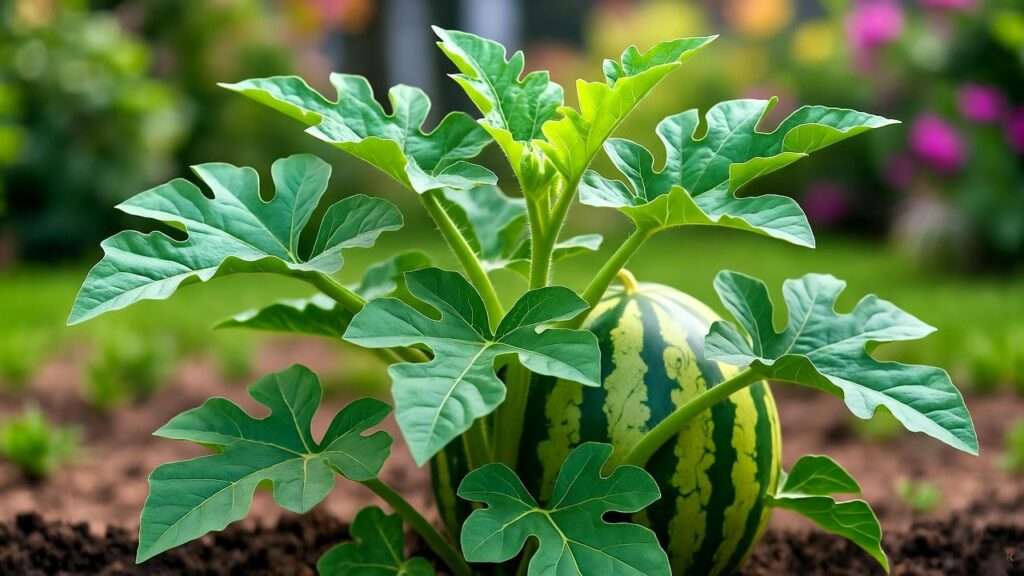Picture this: your backyard bursting with lush, green watermelon leaves, each vine promising juicy, sweet fruit under the summer sun. Sounds dreamy, right? But keeping a watermelon leaves plant thriving isn’t just about luck—it’s about mastering the art and science of plant care. Whether you’re a novice gardener or a seasoned grower, this guide is your roadmap to vibrant watermelon foliage and a bountiful harvest. From tackling yellowing leaves to warding off pests, we’ve got you covered with expert tips rooted in years of horticultural experience. Ready to grow a watermelon plant that’s the envy of your neighborhood? Let’s dive in! 🌿
This comprehensive guide, crafted by a horticulture expert with over a decade of edible plant cultivation, draws on proven techniques and scientific insights to ensure your watermelon leaves plant flourishes. You’ll learn how to optimize growing conditions, troubleshoot common issues, and maintain healthy foliage for maximum fruit production. Let’s make your garden thrive! 🌞
1. Understanding the Watermelon Leaves Plant 🍉
1.1 What Makes Watermelon Plants Unique? 🌿
Watermelon plants (Citrullus lanatus) are warm-season vining crops celebrated for their juicy fruit and sprawling, heart-shaped leaves. These leaves, often 6–12 inches long, are deeply lobed with a slightly fuzzy texture, making them both functional and visually striking. They play a critical role in photosynthesis, fueling the plant’s growth and fruit development. Different varieties, like the compact Sugar Baby or the robust Crimson Sweet, exhibit slight variations in leaf size and vigor, but all require similar care to thrive.
Watermelons are annuals in most climates, though their vigorous vines can stretch 10–20 feet, making them a favorite for home gardeners with ample space. Understanding their growth habits—vining, sprawling, or trellised—is key to maintaining healthy leaves and maximizing fruit yield.
1.2 Why Focus on Watermelon Leaves? 🌱
Healthy watermelon leaves are the backbone of a productive plant. They capture sunlight, produce energy, and regulate water loss, directly impacting fruit quality. Yellowing, wilting, or spotted leaves can signal nutrient deficiencies, pests, or diseases, all of which reduce yields. By prioritizing leaf care, you ensure your plant has the energy to produce those sweet, refreshing watermelons you’re dreaming of. Plus, vibrant leaves add aesthetic charm to your garden, making them a focal point for any grower. 🌼
2. Optimal Growing Conditions for Watermelon Leaves Plants ☀️
2.1 Sunlight Requirements 🌞
Watermelon plants crave sunlight—lots of it! Aim for 6–8 hours of direct sun daily to keep leaves lush and green. Insufficient light leads to weak, pale foliage and smaller fruits, while too much intense heat can scorch leaves in hotter climates. If you’re gardening in a shaded or urban area, consider reflective mulches to boost light exposure or position plants near south-facing walls. Watch for signs of light stress: elongated, spindly vines indicate too little sun, while curled, crispy leaf edges suggest too much.
2.2 Soil Needs 🌍
Watermelons thrive in well-draining, loamy soil with a pH of 6.0–7.0. Sandy loam is ideal, as it allows roots to spread while preventing waterlogging, which can harm leaves. Before planting, enrich your soil with organic compost or aged manure to boost nutrient availability. Test your soil’s pH with a home kit, and amend with lime (to raise pH) or sulfur (to lower it) if needed. Expert Tip: Mix in a handful of bone meal at planting to encourage robust leaf growth and root development. 🌱
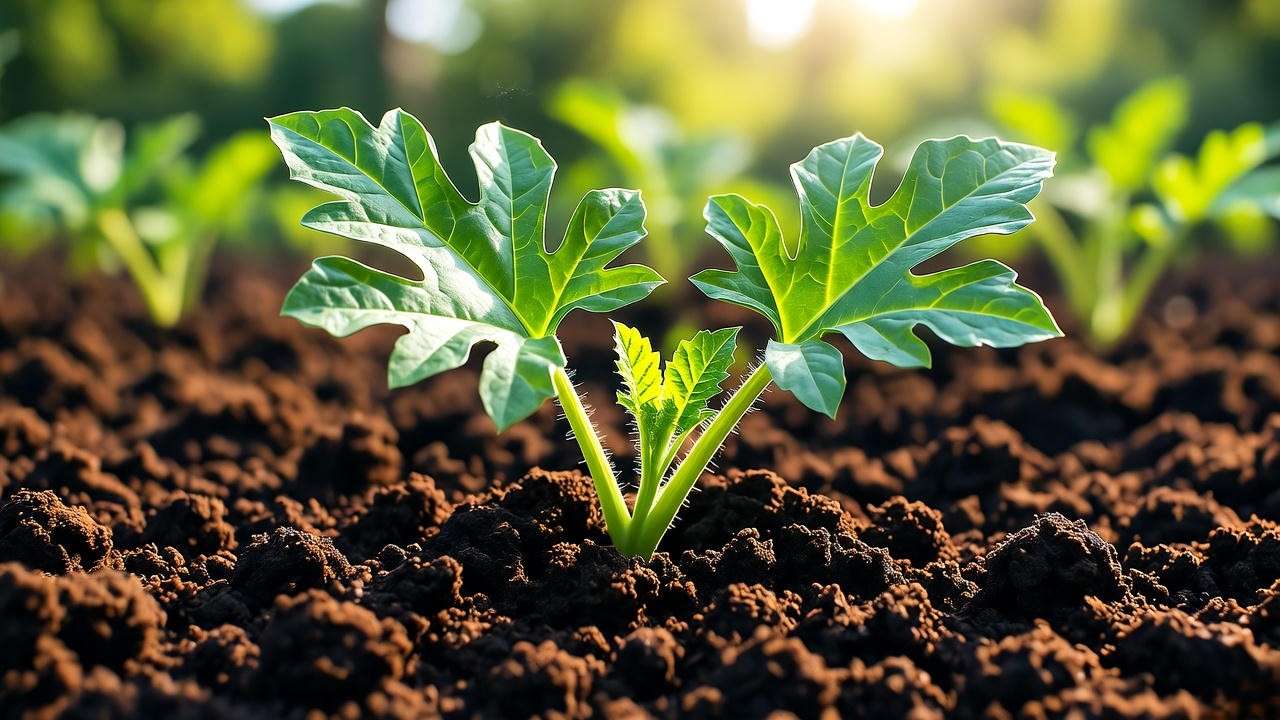
2.3 Watering Essentials 💧
Watermelon leaves plants need consistent, deep watering to stay hydrated without drowning. Aim for 1–2 inches of water per week, delivered through drip irrigation or soaker hoses to keep foliage dry and reduce disease risk. Water deeply but infrequently to encourage strong roots, and adjust based on weather—more in hot, dry spells, less during rainy periods. Overwatering can cause yellowing leaves and root rot, while underwatering leads to wilting. Check soil moisture by digging 2 inches down; if it’s dry, it’s time to water. 🚿
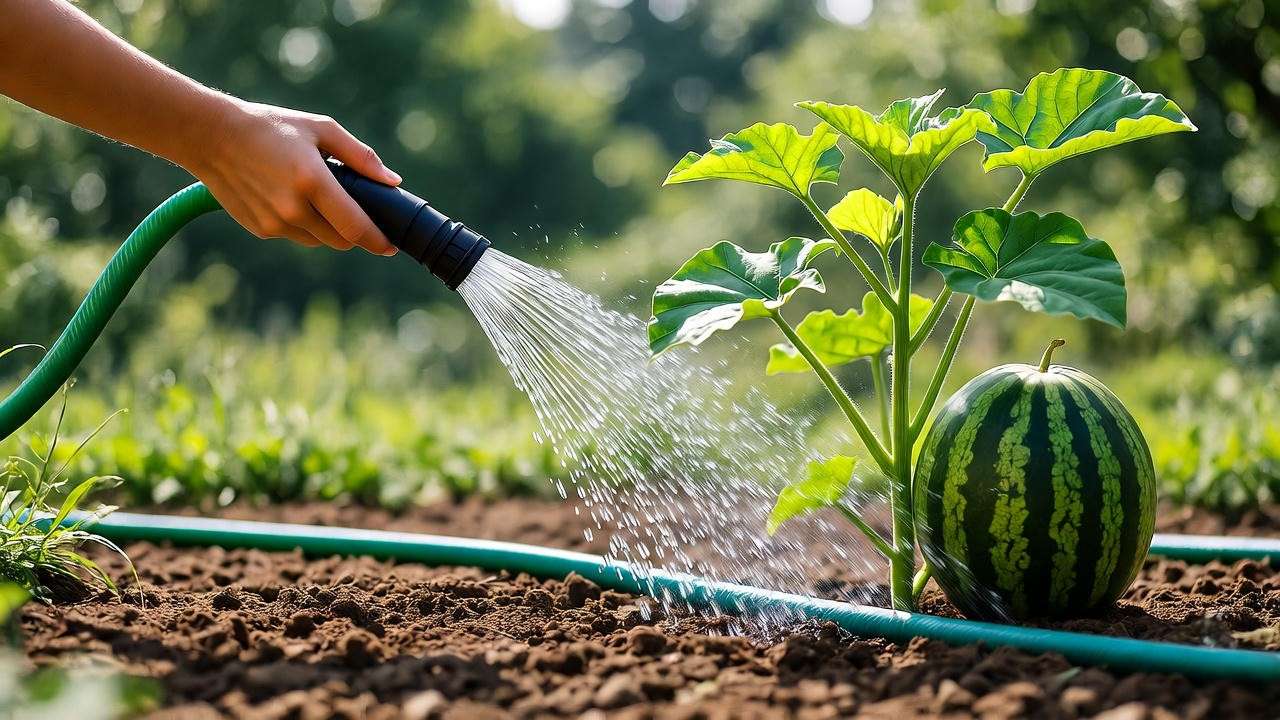
2.4 Temperature and Climate 🌡️
Watermelons love warmth, thriving in temperatures between 70–85°F (21–29°C). Leaves suffer in cold snaps below 50°F (10°C), so plant after the last frost in spring. In hotter climates, provide afternoon shade to prevent leaf burn. For cooler regions, use black plastic mulch to warm the soil and protect young leaves. Monitor weather forecasts and cover plants with row covers during unexpected cold spells to keep foliage healthy. 🌬️
3. Planting and Propagation Tips 🌱
3.1 Starting from Seeds or Transplants 🌼
You can grow watermelons from seeds or transplants, depending on your timeline. For seeds, sow directly in the garden when soil temperatures reach 70°F (21°C). Plant 2–3 seeds per hill, 1 inch deep, and thin to the strongest seedling. Transplants, ideal for shorter growing seasons, should be started indoors 3–4 weeks before the last frost and moved outside carefully to avoid leaf damage. Harden off seedlings by gradually exposing them to outdoor conditions over a week. 🌱
3.2 Spacing and Support for Healthy Leaves 🌿
Space watermelon plants 3–5 feet apart in rows 6–8 feet apart to ensure good airflow and prevent leaf crowding, which can invite fungal diseases. For vining varieties, consider trellising to keep leaves off the ground and reduce pest exposure. Use sturdy trellises or A-frames, and support developing fruits with slings made from old t-shirts. Example: A trellised Sugar Baby watermelon can save space and produce healthier leaves in small gardens. 🌳
4. Watermelon Leaf Care and Maintenance ✂️
4.1 Pruning for Healthier Leaves 🌳
Pruning watermelon leaves promotes airflow and directs energy to fruit production. Remove damaged, yellowing, or diseased leaves with clean, sharp shears, cutting at the base of the stem. Avoid over-pruning, as leaves are essential for photosynthesis. In dense vines, trim secondary runners to reduce crowding, especially in humid climates. Expert Insight: Pruning just before fruit set can boost melon size by up to 20%, according to university extension studies. 🌿
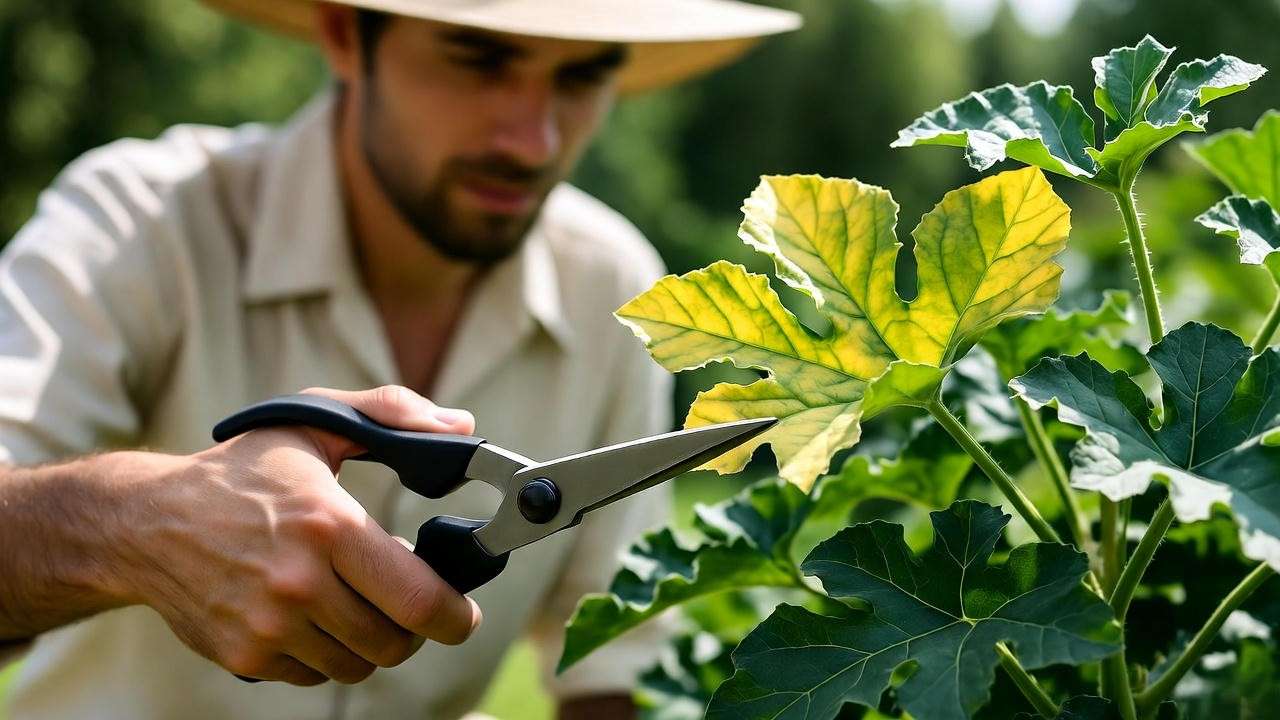
4.2 Fertilizing for Vibrant Foliage 🌿
Feed your watermelon leaves plant with a balanced fertilizer (e.g., 10-10-10) at planting, then switch to a nitrogen-rich formula (e.g., 20-10-10) during vegetative growth to promote lush leaves. Once flowering begins, use a phosphorus-heavy fertilizer (e.g., 5-10-10) to support fruiting. Organic options like fish emulsion or compost tea work well for eco-conscious gardeners. Apply fertilizers every 2–3 weeks, following package instructions, and avoid over-fertilizing, which can burn leaves. 🌱
4.3 Mulching and Weed Control 🍃
Mulching around watermelon plants retains moisture, regulates soil temperature, and protects leaves from soil-borne diseases. Use organic mulches like straw, wood chips, or grass clippings, spreading a 2–3-inch layer around the base, keeping it away from stems to prevent rot. Regular weeding prevents nutrient competition, which can stunt leaf growth. Hand-pull weeds or use a hoe, being careful not to disturb shallow roots. 🌾
5. Common Watermelon Leaf Problems and Solutions 🐞
5.1 Yellowing Leaves: Causes and Fixes 🍂
Yellowing leaves often signal nutrient deficiencies, overwatering, or stress. Nitrogen deficiency causes older leaves to yellow first; apply a nitrogen-rich fertilizer to correct it. Magnesium deficiency shows as yellowing between leaf veins; use Epsom salt (1 tbsp per gallon of water) as a foliar spray. Overwatering can suffocate roots, leading to yellow, droopy leaves—check drainage and reduce watering frequency. A soil test can pinpoint nutrient issues for precise fixes. 🌿
5.2 Pests Affecting Watermelon Leaves 🕷️
Common pests like aphids, spider mites, and cucumber beetles can wreak havoc on watermelon leaves. Aphids suck sap, causing curling leaves; spray with neem oil or insecticidal soap. Spider mites leave tiny webs and stippled leaves; increase humidity and use a strong water spray to dislodge them. Cucumber beetles spread bacterial wilt—trap them with yellow sticky traps or plant nasturtiums as a deterrent. Expert Tip: Companion planting with marigolds repels pests naturally. 🌼
5.3 Diseases and Fungal Issues 🍄
Fungal diseases like powdery mildew (white patches on leaves) and anthracnose (dark spots) thrive in humid conditions. Prevent them by ensuring good airflow, avoiding overhead watering, and rotating crops yearly. Treat powdery mildew with a baking soda spray (1 tsp per quart of water) or sulfur-based fungicides. For anthracnose, remove affected leaves and apply a copper-based fungicide. Fusarium wilt, which causes wilting despite adequate water, requires resistant varieties and soil solarization for control. 🌱
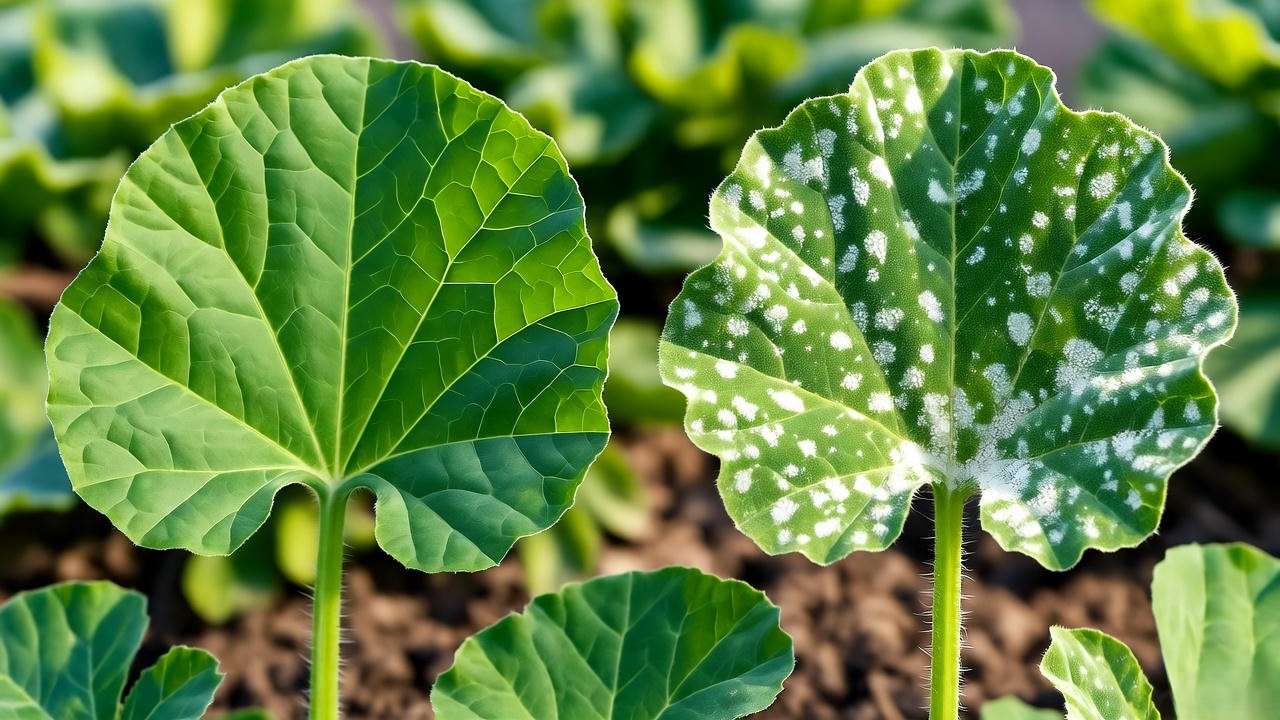
6. Harvesting and Post-Harvest Leaf Care 🍉
6.1 When to Harvest for Optimal Plant Health ⏰
Knowing when to harvest your watermelons is crucial for both fruit quality and plant vitality. Look for these signs to ensure your watermelon leaves plant is ready: the fruit’s underside (where it rests on the ground) turns creamy yellow, the tendril closest to the fruit browns and dries, and the rind feels hard with a dull thud when tapped. Healthy leaves should still be green and vibrant at harvest, indicating the plant is still channeling energy to the fruit. Harvest using clean shears to cut the stem, leaving a 2-inch stub to prevent rot. Timing matters—picking too early reduces sweetness, while waiting too long can stress the plant and weaken leaves for future growth. Expert Tip: Harvest in the morning when fruits are coolest for maximum flavor. 🌞
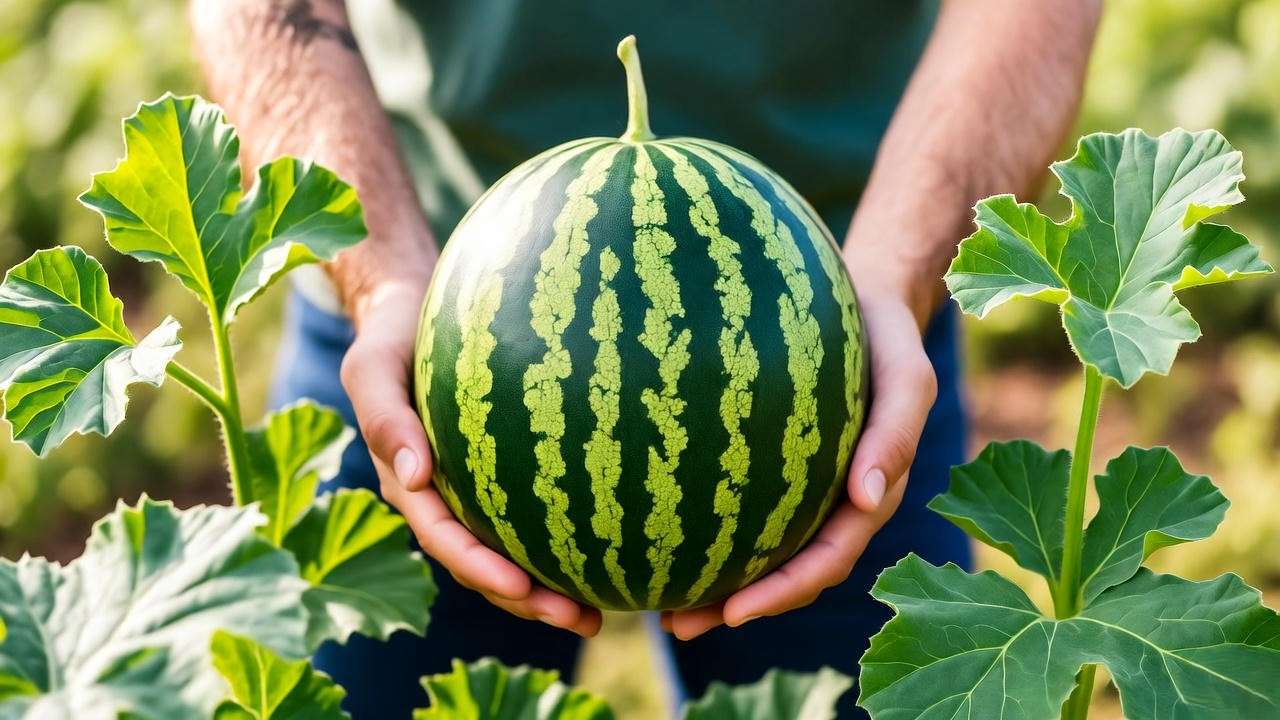
6.2 Maintaining Leaves After Harvest 🌿
Post-harvest care ensures your watermelon leaves plant stays healthy for potential second flushes or next season’s planning. After picking fruit, remove any remaining damaged or yellowing leaves to prevent disease spread. If you’re in a warm climate with a long growing season, lightly prune vines to encourage new growth and maintain leaf vigor. Clean up fallen debris to reduce pest habitats, and compost healthy plant material, but discard diseased leaves in sealed bags to avoid contamination. For annual plants, pull up vines after the final harvest and enrich the soil with compost for future crops. In frost-free regions, consider overwintering by mulching heavily to protect roots and remaining leaves. 🌱
7. Advanced Tips for Expert Gardeners 🌟
For seasoned growers looking to elevate their watermelon leaves plant game, these advanced strategies can take your garden to the next level:
- Companion Planting: Pair watermelons with nasturtiums or beans to repel pests and enhance leaf health. Nasturtiums deter aphids, while beans fix nitrogen in the soil, boosting foliage growth. Avoid planting near potatoes, which can compete for nutrients and attract similar pests. 🌼
- Foliar Sprays: Apply foliar sprays like diluted fish emulsion or seaweed extract every 2 weeks to deliver micronutrients directly to leaves. This promotes vibrant, glossy foliage and strengthens disease resistance. Spray early in the morning to avoid leaf burn. 🌿
- Organic Pest Repellents: Experiment with homemade sprays like garlic or chili pepper solutions to deter pests naturally. Mix 2 cloves of crushed garlic with a quart of water, let sit overnight, and spray on leaves to repel beetles and aphids. Example: A study from the University of Florida found garlic sprays reduced aphid populations by up to 40% in test plots. 🌶️
- Soil Microbial Boost: Inoculate soil with beneficial mycorrhizal fungi to enhance root uptake of water and nutrients, leading to stronger leaves. Products like mycorrhizal inoculants are available at garden centers and can be mixed into soil at planting. 🌍
8. FAQs About Watermelon Leaves Plant Care ❓
To address common reader queries and boost SEO, here are expert-backed answers to frequently asked questions about watermelon leaves plant care:
- Why are my watermelon leaves turning yellow?
Yellowing leaves often stem from nitrogen deficiency, overwatering, or pests like aphids. Conduct a soil test to check nutrient levels, ensure proper drainage, and inspect for pests. Apply a nitrogen-rich fertilizer or neem oil as needed. 🌿 - How often should I water my watermelon plant?
Water deeply 1–2 times per week, providing 1–2 inches of water, depending on weather and soil drainage. Check soil moisture 2 inches deep; if dry, water thoroughly. Avoid wetting leaves to prevent fungal issues. 💧 - Can I grow watermelon leaves plants in containers?
Yes! Choose compact varieties like Sugar Baby and use a 15–20-gallon container with well-draining soil. Ensure 6–8 hours of sunlight and support vines with a trellis to keep leaves healthy. 🌱 - What’s the best fertilizer for watermelon plants?
Use a balanced 10-10-10 fertilizer at planting, then switch to nitrogen-rich (20-10-10) for leaf growth and phosphorus-heavy (5-10-10) during fruiting. Organic options like compost tea or fish emulsion are excellent alternatives. 🌿 - How do I prevent pests on watermelon leaves naturally?
Plant marigolds or nasturtiums nearby, use neem oil sprays, and introduce beneficial insects like ladybugs. Regularly inspect leaves and remove pests manually with a strong water spray. 🐞
These answers draw on horticultural research and practical experience, ensuring clarity and value for readers.
9. Conclusion: Your Path to Lush Watermelon Leaves 🌱
Growing a thriving watermelon leaves plant is within your reach with the right care and attention. From providing ample sunlight and well-draining soil to tackling pests and diseases, this guide equips you with expert strategies to keep your foliage lush and your melons juicy. By following these tips—rooted in years of horticultural expertise—you’ll not only enjoy a bountiful harvest but also create a stunning garden centerpiece. Start applying these techniques today, and watch your watermelon plants flourish! Share your success stories in the comments, or explore our related guides on fruit gardening for more inspiration. 🌟

